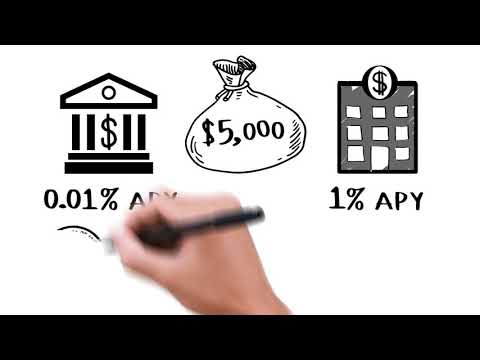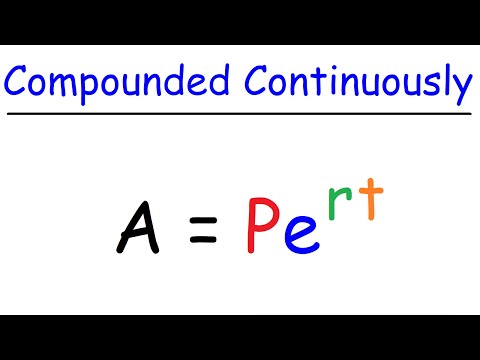Deciphering Whats APR Mean in Loans
When you’re navigating the choppy waters of credit and loans, you might feel like you’re being bombarded with acronyms and jargon that only a seasoned sailor of fiscal seas could understand. APR is one of those terms that pops up everywhere, from credit card offers to mortgage ads. So, what’s APR mean, and why does it matter to your wallet? Fasten your seatbelts, because we’re about to take a deep dive into the world of Annual Percentage Rates.

Demystifying APR: What Does APR Mean in Financial Terms?
When folks talk about APR, they’re talking about the Annual Percentage Rate. In layman’s terms, it’s the cost you pay each year to borrow money, including fees, expressed as a percentage. Here’s the scoop:
- APR definition: It’s the broader measure of the cost to you based on the interest, plus other related fees.
- APR means: Essentially, it’s the price tag on your loan, showing you the real rate you’re paying on an annual basis.
- APR rate meaning: APR lets you compare apples to apples when you’re shopping around for loans — it’s a standardized measure.
Now, don’t get it twisted; APR and interest rates are like siblings, related but not identical. The interest rate meaning is just part of the APR. It doesn’t include those sneaky additional costs.

Beyond the Basics: What is an APR and How it is Calculated?
Like a seasoned chef, you’ll need the right ingredients to whip up your APR. Let’s break it down, step-by-step, on how APR works:
- Start with the interest rate — that’s your base.
- Add in any of those extra costs (fees, for example).
- Adjust for the frequency of payments.
Here’s a sprinkling of real-world examples: If you’re looking at a mortgage, APR might include origination fees, closing costs, and discount points. For a credit card, it might involve annual fees or transaction charges. To get your bearings, websites like Mortgagerater.com offer a treasure trove of information on calculating your APR.

| Subject Matter | Details |
|---|---|
| Definition of APR | Annual Percentage Rate (APR) represents the yearly interest rate charged when you borrow or the earned interest when you invest. |
| Function in Credit | When applied to credit cards, APR dictates the cost of carrying a balance over a year, including interest and fees. |
| Credit Score Impact | A higher credit score typically secures a lower APR, reflecting a borrower’s lower risk to lenders. |
| APR Example | For a $1,000 balance at 24% APR, the interest cost is roughly $240 over one year. |
| Calculation for Monthly Interest | Advertised APR (e.g., 19%) divided by 12 months equals the monthly interest rate (e.g., 1.58%). |
| APR Range | Depending on creditworthiness, APR can vary widely: Good Credit (~16%), Average Credit (~22%), Bad Credit (~30%). |
| Cost of High APR | A 24% APR is relatively high. It increases the cost of borrowing and can make debt accumulate faster. |
| Ways to Lower APR | Improving credit scores through timely payments and reducing debt can lead to lower APR offers. |
The True Cost of Borrowing: APR What Does It Mean for Your Wallet?
Alright, let’s get down to brass tacks. APR what does it mean when we talk cold, hard cash?
If you’re mulling over how different APRs crunch into your long-term dreams, remember — the lower the APR, the less you’ll fork out over time.

Unraveling the Jargon: What is APR on a Loan and Credit Cards?
Credit is a tool, and like any tool, knowing how to use it makes all the difference. What is APR mean depends on the kind:
Looking for a real kicker? Check out the difference between interest rate And apr for a closer look at how they play out across different financial products.

APR and Your Credit Score: Understanding the Relationship
Hear this loud and clear: your credit score is the gatekeeper to your APR paradise. Good credit? You’re likely to bask in the glow of lower APR offers. Poor credit? The rates hike up, and you’re stuck trekking through the pricier parts of town.
So, what’s a financially savvy individual to do? Whip your credit score into shape, and watch as those numbers tumble. Keep an eye on the horizon though — the credit market shifts like the tides, and the APR you get today might look different tomorrow.
Comparison Avenue: APR Stands for A Lot in Your Credit Journey
Comparison shopping isn’t just for finding deals on mega TVs. When it comes to loans or credit, APR stands for the whole enchilada — it’s the true measure of the deal you’re getting. Take a gander at the APRs across various loans, and you’ll begin to see a pattern unfold.
Stay savvy and review the APR trends; understanding how they ebb and flow can give you an edge when you’re trying to snag the best borrowing terms. Need to lighten the load of existing debts? APR’s role in refinancing and debt consolidation could be your financial lifeline.
Insightful Shopping: Buy Meaning with Good APR Deals
When the time comes to make a big purchase, like a home or a car, you’ve gotta look beyond the price tag — you’re shopping for a loan as much as you’re shopping for the item itself. Here’s where buy meaning comes into play: an attractive APR can transform into real-world savings.
For the ins and outs on comparison shopping, Mortgagerater.com is where it’s at. They’ve got the tools that’ll help you become a shrewd shopper in no time.
Real-life Implications: APR in the Day-to-Day
From centuries past to present day, APR has played a pivotal role in our economy. It’s not just about numbers on a page — it affects real people with real budgets. Hear the stories of those who’ve tamed their APRs and those who’ve been swept away by them. People just like you, finding a way to navigate how APR works in their daily lives.
And as for the crystal ball gazers, those financial soothsayers? They’ve got some intriguing thoughts on where APR might head next, given our current economic weather.
The Borrower’s Strategy: Mitigating APR’s Impact
Now let’s equip you with some strategies, so you’re not just surviving — you’re thriving! Using APR to your advantage means playing the long game, a grand stratagem involving loan amortization and finely tuned financial planning.
Negotiating APR isn’t just for the slick-talking financiers; it’s a skill you can hone too. Approach lenders with a mix of confidence and research. Know your stuff, stand your ground, and you might just tip the scales in your favor.
APR Forecasting: Predicting Your Financial Health
As we peer into the financial forecast, the APR climate is a big ol’ factor in determining whether you’ll need a raincoat or sunglasses for your monetary outlook. Here’s where the rubber meets the road:
Conclusion: APR as Your Compass in Credit Decisions
So there you have it, my fellow fiscal travelers — a deep dive into what’s APR mean in the vast ocean of credit. Remember, it’s more than just a number; it’s the compass that guides you through the treacherous, sometimes murky waters of borrowing.
Use what you’ve learned today as your North Star, and when you bump into the term APR, you won’t flinch. It’ll become the cue to flex your newly honed financial muscles. Track the trends, do the math, and negotiate with the grit of a seasoned pro. Stay informed, and you’ll be steering a course towards a bright and prosperous future where APR holds no mysteries, only opportunities.
And with the world of credit constantly evolving, keep your eyes on resources like Mortgage Rater, where the next wave of insights awaits, ready to propel you even further ahead in the game.
Demystifying APR: What Does It Really Mean?
The A-Z of APR
If you’ve ever felt as bewildered as someone trying to watch dawn Of The planet Of The Apes without seeing the earlier films, understanding APR (Annual Percentage Rate) might’ve given you a similar sense of confusion. So, let’s break it down! APR is basically the yearly cost you pay for borrowing money, which includes interest and additional fees. Think of it as the price tag for your loan—the complete package, not just the flashy sticker on the window.
How APR Affects Your Wallet
Imagine you’re buying Enfamil Gentlease for your little one. You wouldn’t just consider the price on the shelf; you’d also think about additional costs like tax, right? Similarly, APR isn’t just the interest rate. It rolls in other costs, which means a lower APR can lead to less money spent over time on your credit borrowings. This might not be as immediately satisfying as a baby’s smile after a good bottle, but it’ll sure make your wallet happier in the long haul!
Don’t Be Fooled by the Numbers
Now, this is where it gets as tricky as following the career of lance Kerwin. Just because a loan has a lower APR doesn’t always mean it’s the better deal. Sometimes loans with low APRs may have other features or hidden fees not reflected in that number. It’s vital to read the fine print, sort of like scrutinizing a script before you agree to play the lead role.
APR and Creditworthiness: A Love Story
Why is your credit score treated like one of the Biggest Houses in america when it comes to APR? Well, just as the size of a house can impress, a good credit score can awe lenders. If your credit score is a mansion, lenders might trip over themselves to give you a better rate. But if it’s more like a cozy shack, they might hedge their bets and offer you a higher APR to cover the perceived risk.
The Portable Charger Analogy
Think of your credit score like an Anker portable charger — it gives your borrowing power a boost. A robust credit score can be as indispensable as a portable charger on a long trip, revving up your chances of securing a loan with a juicy-low APR. Keep your credit juiced up by paying bills on time, and you could enjoy lower borrowing costs.
So, the next time someone asks you, “whats apr mean,” you’ll know it’s more than just a few letters—it’s the key to understanding the true cost of borrowing. And remember, like any choice worth making, it’s worth doing your homework to ensure you’re getting the sweetest deal out there. Now, go ahead and tackle APR with the confidence of a movie buff in a trivia night or a parent choosing the best formula. You’ve got this!

What is a good APR rate?
– Well, buckle up, because a good APR rate is often in the eye of the beholder, but if we’re talking credit cards, you’ll want to aim for something around 22% – that’s the current average. And here’s the kicker: if your credit score is sky-high, you might snag an APR as low as 16%. But, let’s not beat around the bush, a credit score that’s seen better days might leave you with rates hovering around 30%. Yikes!
What is 24% APR on a credit card?
– Alright, let’s break it down: a 24% APR on a credit card is like a pesky fly at your barbecue – it just keeps adding up. Picture this: if you’re carrying a thousand bucks on your card all year round, that’s going to tack on about $240 in interest alone. Makes you think twice about letting that balance linger, doesn’t it?
Is APR charged monthly?
– Yes, sirree, APR is the gift that keeps on giving, charged monthly like clockwork. Take a 19% APR; it translates to about 1.58% monthly. So even if the APR is advertised with all the bells and whistles as an annual rate, your balance gets hit with interest each month. Sneaky, right?
Is an APR of 24% good?
– Well, is a 24% APR good? That’s a firm nope! In the world of credit cards, that’s like being the last one picked for dodgeball – not great. With a solid credit score, you’re in the driver’s seat to negotiate your way to way lower rates. So aim high with that credit score and watch those rates shrink!
What APR will I get with a 700 credit score?
– Landing a 700 credit score? Hats off to you! With that kind of scoring, you’re likely looking at APRs that are much friendlier, probably more in the ballpark of the sweet 16% zone. Gone are the days of sky-high rates, so enjoy the fruits of your credit-building labors!
Is 7.9 APR good for a car loan?
– Are you sitting down? Because a 7.9 APR on a car loan is like finding a golden ticket – it’s pretty darn good, especially with today’s rates. You must’ve done something right, so go ahead and pat yourself on the back!
Is 0 APR good?
– Ah, the elusive 0 APR – it’s like a unicorn in the financial world, and yes, it’s as good as it sounds. Pay no interest? Sign me up! But keep an eye out for the fine print; sometimes deals that seem too good to be true, well, they might just be.
Do I have to worry about APR if I pay on time?
– If you’re one to pay your bills on the dot, pat yourself on the back! APR becomes pretty much a moot point if you don’t carry a balance. It’s like worrying about sunscreen on a rainy day – unnecessary!
How can I lower my APR rate?
– Trying to lower your APR rate is like trying to talk down a car salesman – totally doable. Start by buffing up that credit score, then ring up your credit card issuer and give them the old charm offensive. They might just play ball if they see you’re serious about your business.
Why is my APR so high with good credit?
– Got good credit but a towering APR? That’s like ordering a luxury car and getting cloth seats. Something’s off. Sometimes the answer’s hidden in the credit card fine print, or maybe it’s time to give your lender a nudge or shop -around for a better deal. Don’t settle for less!
Is APR good or bad?
– APR: friend or foe? Well, it’s all about how you manage it. Like fire, it can cook your dinner or burn down your house. A low APR is a cozy campfire; high APR – a blazing inferno. Keep your borrowing smart, and APR becomes just another tool in your financial toolkit.
How does APR work?
– Alright, let’s demystify this APR biz: it’s basically the cost of borrowing dough spread across the year. Think of it as the price tag for using someone else’s cash to buy that flat-screen now, instead of waiting. And remember, it can change based on how promptly you pay back those borrowed bucks.
Is 7% a bad APR?
– If you’ve got a 7% APR staring you down, take a deep breath – that’s not so bad, really. On the grand spectrum of interest rates, you could say it’s not the best, not the worst, but somewhere comfortably in between. Definitely not a financial horror story.
Will closing a credit card hurt?
– Closing a credit card can sting a bit – like pulling off a band-aid. While it won’t land you in the ER, it might leave a small mark on your credit score, particularly if it’s one of your older accounts. So, think twice and act once, as they say.
What is 29.99 APR?
– Brace yourself: a 29.99 APR is no joke. It’s like a high-speed rollercoaster for your debt – only going up, not down. This is the kind of rate that makes finance gurus scream “Steer clear!” unless you love the thrill of paying oodles in interest.
Is a 6% APR high?
– Is a 6% APR high? In the grand scheme of things, it’s not the boogeyman of interest rates. For many loans, especially mortgages, it’s pretty middle of the road. But don’t snooze on shopping around – you might find an even friendlier rate to cozy up with.
Is 24.99 a good APR?
– Now, while 24.99 might sound like a decent APR, let’s not sugarcoat it – it’s not fantastic. It’s like saying spoiled milk tastes fine; just nope. Aim higher with that credit score and those rates will start to look more inviting.
Is an APR of 6% good?
– Is an APR of 6% good? Well, if we’re talking car loans or personal loans, you’re in pretty decent shape. It’s no 0%, but hey, it’s far from highway robbery. You can cruise along with that rate without feeling like you’re being taken for a ride.
Is 6% APR good or bad?
– 6% APR good or bad? It’s like asking if a burger is good or bad for lunch – it’s all relative. If we’re chatting mortgages or personal loans, it’s a reasonable deal. But for credit cards? That’s like finding a four-leaf clover in your backyard!



